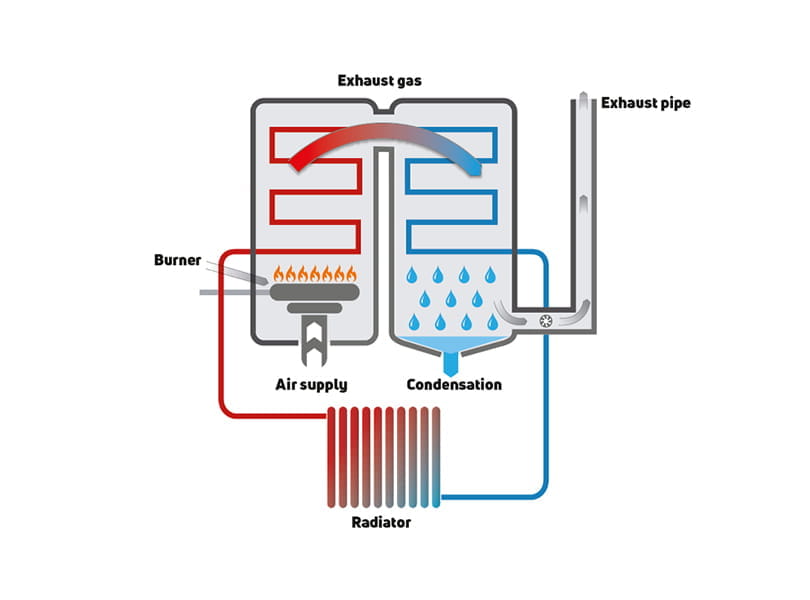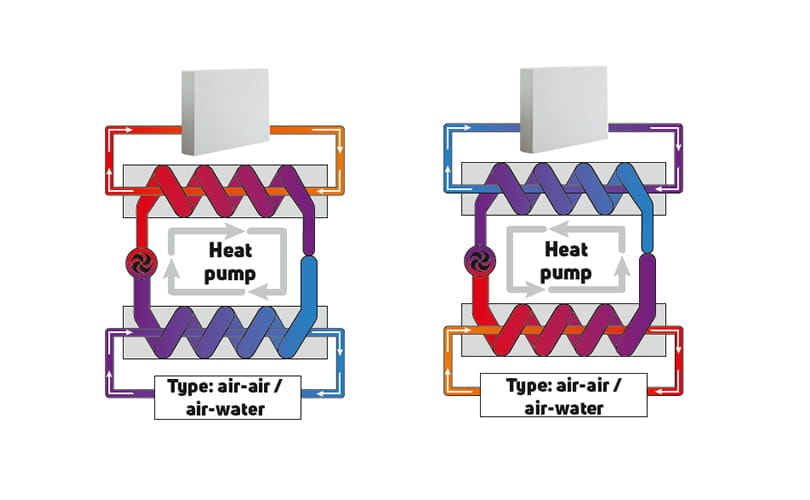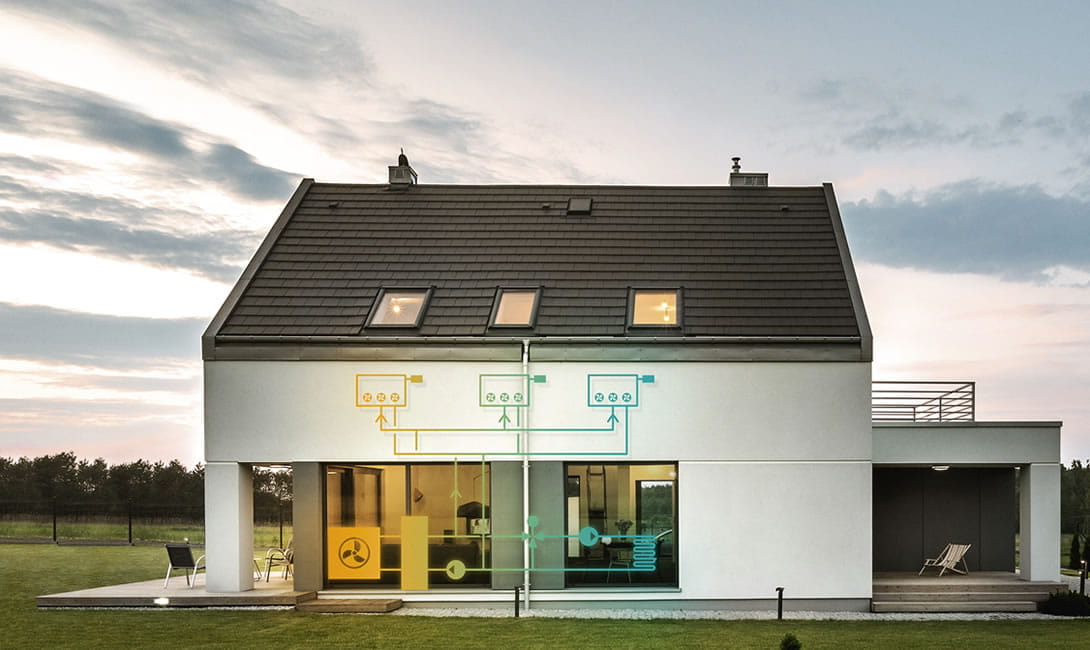The reasons for a radiator replacement
Heating refurbishment with gas condensing boiler
The savings potential of gas condensing technology can only be exploited by means of common control technology at low system temperatures and in conjunction with renewable energies (e.g. solar support). System temperatures here refer to the temperature levels in the heating circuits, i.e. in principle and very clearly the average temperatures of the radiators.
On closer inspection, there is a temperature gradient in the radiator – it is warmer at the top than at the bottom - but we can neglect this in principle. If the system temperatures are low, more heat can be recovered from the exhaust gas. The energy content of the fuel is also much better utilised and the efficiency of the overall plant increases.

The heating engineer sets the system temperatures on the boiler controller. This is where the technical advances in radiators over recent years come into play. Radiators have in fact become much more efficient through various design measures. This means that, for the same size, they provide the same performance as old radiators despite low system temperatures. In addition to aesthetic reasons, there are also energy-related reasons for a radiator replacement.
Conclusion: Renovation with a condensing boiler in combination with renewable energies already brings a certain amount of energy savings because modern boilers simply have fewer losses. However, the full savings potential of condensing boiler technology can only be tapped with new radiators or with a highly dynamic underfloor heating system. Where it makes sense, radiators and underfloor heating can also be installed in combination.
Heating renovation with a heat pump
The heat pump can be a highly efficient heating system if certain conditions are met – first and foremost, the lowest possible system temperatures. If nothing else is changed in the building and the old radiators remain in it, then a heat pump can even increase the heating costs compared to the old boiler. This is proven by practical examples. A heating renovation with a heat pump usually only provides satisfactory results if, above all, the energy level of the building is high.
Furthermore, the heat transfer system must be adapted to low system temperatures. In the past, underfloor heating, which manages with system temperatures of around 35 °C, was the means of choice for heat pumps. Thanks to technical advances, a changeover to underfloor heating systems is not necessarily necessary today, as modern panel radiators can also be operated at comparatively low temperatures (e.g. 45 °C). There are also fan-assisted radiators that can be operated at temperatures below 45 °C.

Many low temperature heating systems are operated with heat pumps. Regardless of whether they are air-to-air, air-to-water, water-to-water or ground-source heat pumps, they can be used reversibly in many cases. By reversing the process, i.e. by reversing the mode of operation, they open up the possibility of cooling in summer in addition to heating.

